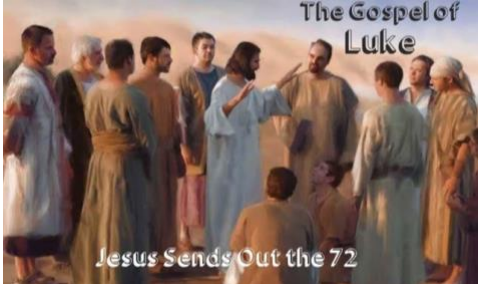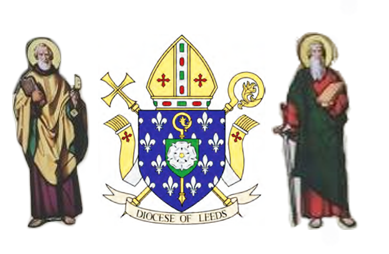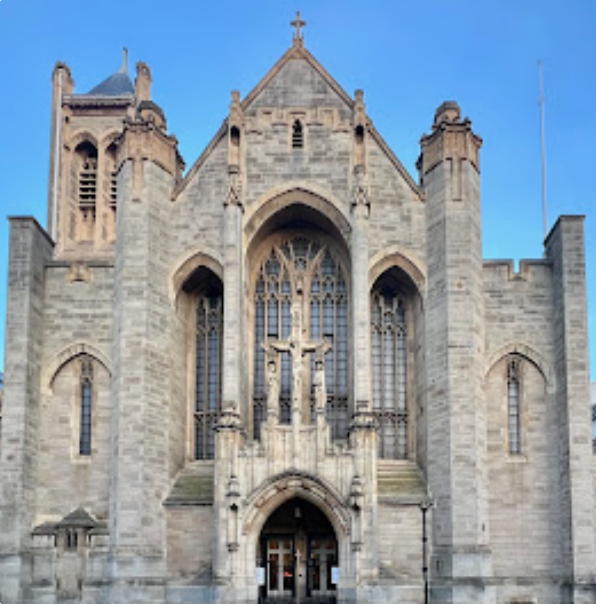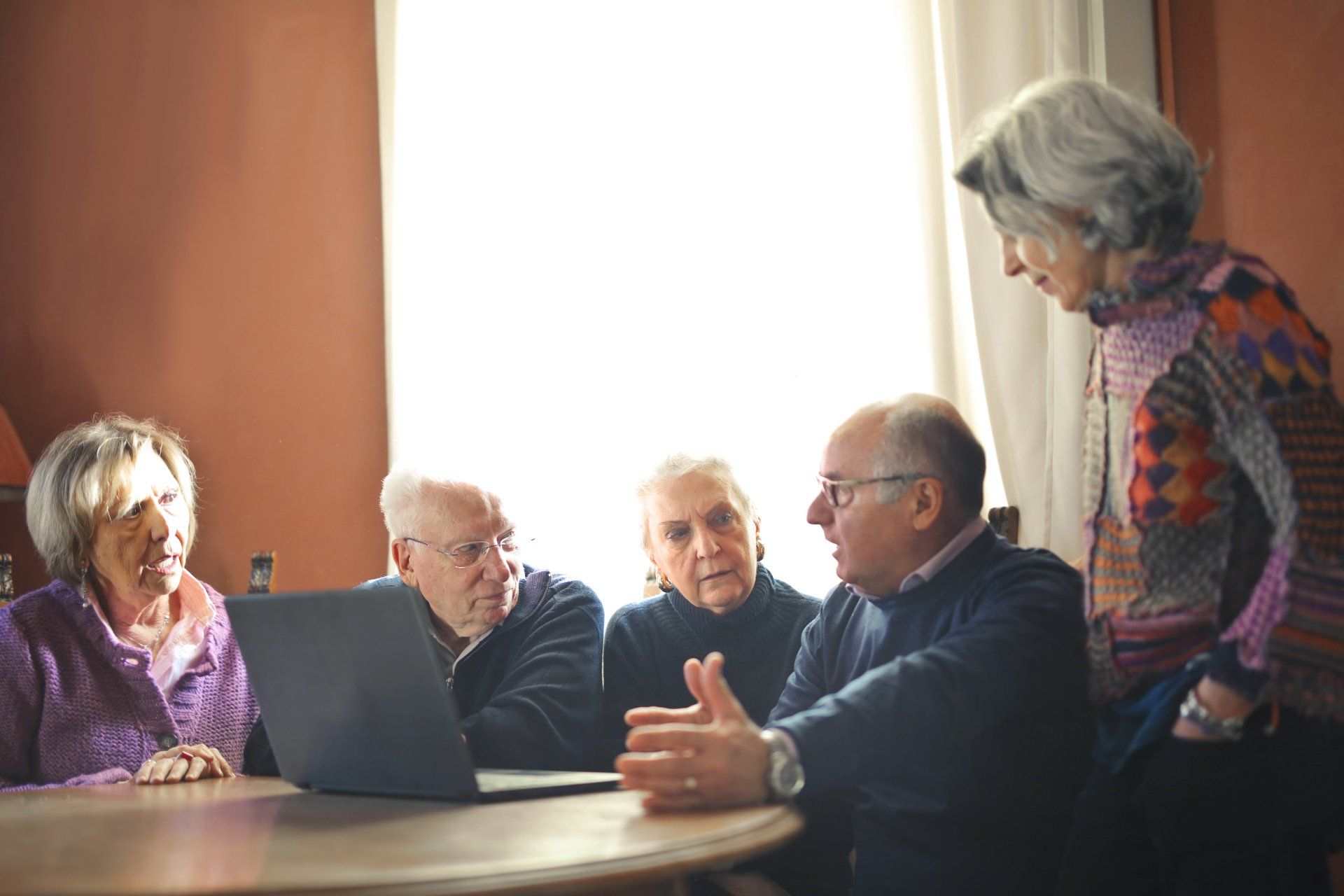Back to Basics – Catholic Questions
Who are the Twelve Apostles?
| Peter |
formerly “Simon,” renamed “Kepha” or “Cephas” by Our Lord; preached in Antioch, Pontus, Galatia, Cappadocia, and Asia Minor, Rome; headed Roman Church (was first Pope); crucified upside-down in Rome, Italy; relics at St. Peter’s Basilica in Vatican City. Symbols: the Keys; upside-down Latin Cross; book. Feast: June 29 (along with St. Paul); August 1 (St. Peter’s Chains). | |
| Andrew |
Peter’s brother; preached in Scythia; Epirus; Achaia; Hellas; Cappadocia, Galatia, and Bithynia, Scythian deserts, Byzantium;Thrace, Macedonia, Thessaly, and Achaia; crucified in Patrae in Achaia; relics at Cathedral of Amalfi, Italy, and in St. Andrew’s Church in Patras, Greece. Symbols: X-shaped Cross; anchor; fish; fishing net. Feast: November 30. | |
| James the Greater |
he and his brother (John) nicknamed by Jesus “Sons of Thunder” (Boanerges); a son of Zebedee; preached in Spain; beheaded by Herod Agrippa I to please the Jews; relics at Compostela, Spain. Symbols: seashells; pilgrim’s staff; scroll; book; floppy hat; trampling a Moor; mounted on horseback. Feast: July 25. | |
| John |
he and his brother (James the Greater) nicknamed by Jesus “Sons of Thunder” (Boanerges); a son of Zebedee; the disciple whom Jesus loved; Evangelist; preached in Asia Minor (Ephesus). Symbols: chalice; eagle; serpent; sword; cauldron. Feast December 27. | |
| Philip |
preached in Hieropolis in Asia (?); relics at church of the Dodici Apostoli in Rome, Italy. Symbols: basket of loaves; T-shaped Cross. Feast: May 11 (with St. James the Less) | |
| Bartholomew |
preached in India, Mesopotamia, Persia, Egypt, Armenia, Lycaonia, Phrygia, shores of the Black Sea (?); beheaded or flayed alive and crucified, head downward in Albanopolis in Armenia; relics at St. Bartholomew-in-the-Island in Rome, Italy (?). Symbols: tanner’s knife; flayed skin. Feast: August 24. | |
| Matthew |
“Levi”; Evangelist; preached in Ethiopia to the south of the Caspian Sea (not Ethiopia in Africa), Persia and the kingdom of the Parthians, Macedonia, and Syria, and to the Hebrews generally (?). Symbols: angel/man/winged man holding a pen or inkwell; bag of coins, money bag, money box, or purse; spear; sword; halberd; lance. Feast: September 21. | |
| Thomas |
“Didymus,” meaning “Twin”; familiarly (not Scripturally) known as “Doubting Thomas”; preached in India; pierced through with spears by four soldiers at Syriac Mazdai; relics in Santhome Cathedral, Chennai, India. Symbols: T-square; spear. Feast December 21. | |
| James the Less |
“James the Just” or “James the Younger”; son of Alphaeus (Clophas) and “brother of the Lord”; Bishop of Jerusalem Church; epistle writer; killed by Jews by being thrown off the Temple and clubbed to death. Symbols: fuller’s club; book; windmill. Feast: May 11 (with St. Philip) | |
| Jude |
“Thaddaeus”; “brother of James (the Less)”; epistle writer. Symbols: shown with medallion with profile of Jesus around his neck; shown with flame above his head; oar; boat; axe; book; pen. Feast: October 28 (with St. Simon). | |
| Simon |
“Simon the Zealot” or “Simon the Canaanite.” Symbols: fish(es); man being sawn in two longitudinally; saw; lance. Feast: October 28 (with St. Jude). | |
| Judas Iscariot |
replaced after his suicide by Matthias (St. Matthias’s Feast: February 24). |
What is Catholic Morality?
Catholic morality is about life: “I came that they may have life, and have it abundantly.” (John 10:10)
Faith & baptism give us new life in Christ. That life involves far more than simply following a set of rules.
This article provides an overview of basic principles of Catholic morality.
It is essential to know these principles: they are the how-to manual for living fully your new life, for obtaining that abundant life Christ has promised you.
The Catholic Catechism starts its section on Catholic morality with St. Leo the Great’s beautiful words:
Christian, recognize your dignity and, now that you share in God’s own nature, do not return to your former base condition by sinning. Remember who is your head and of whose body you are a member. Never forget that you have been rescued from the power of darkness and brought into the light of the Kingdom of God. ( Catechism , #1691)
Morality is a call to recognize our dignity as men and women who have received a free gift of new life in Christ. We must live accordingly.
The Law of Love
Our Lord Jesus himself clearly taught us the first principles of Catholic morality:
“You shall love the Lord your God with all your heart, and with all your soul, and with all your mind. This is the great and first commandment. And a second is like it, You shall love your neighbour as yourself. On these two commandments depend all the law and the prophets.” (Mt 22:37-40)
Love, or charity , is the great commandment of the Lord.
Love of God and love of neighbour are the source & summary of Catholic morality. “All the law and the prophets” flow from this starting point.
This means that what love requires is the essence of all moral rules, all of the Ten Commandments, and all aspects of morality spoken of by the prophets and even by Christ himself. The only things needed are those things which love makes necessary.
It is also important to say that love does, indeed, require many things!
In fact, it takes only a few simple steps of logic to deduce the Ten Commandments and most of the rest of Catholic morality from this starting point.
What are the Ten Commandments ?
The Catholic Ten Commandments are a summary of “the conditions of a life freed from the slavery of sin” ( Catechism , 2057).
They must be understood in relation to the “law of love”: Love of God and love of neighbour summarize all of Catholic morality. The law of love is also the first principle & source of the moral law. It contains “all the law and the prophets” (Mt 22:40).
The Ten Commandments are a description of the minimum that love requires.
Christian life itself requires much more than simply following the Ten Commandments. While the entire Judeo-Christian tradition uses the same Scriptural content for the Ten Commandments, their exact division and numbering varies.
The Catholic tradition uses the division of the Commandments established by St. Augustine. (The Lutheran confessions also use this numbering, while some other confessions & traditions use slightly different numberings.)
Here are the Catholic Ten Commandments:
- I am the LORD your God. You shall worship the Lord your God and Him only shall you serve.
- You shall not take the name of the Lord your God in vain.
- Remember to keep holy the Sabbath day.
- Honor your father and your mother.
- You shall not kill.
- You shall not commit adultery.
- You shall not steal.
- You shall not bear false witness against your neighbor.
- You shall not covet your neighbor’s wife.
- You shall not covet your neighbor’s goods.
What are the Eight Beatitudes?
“Blessed are the poor in spirit,
for theirs is the kingdom of heaven.
Blessed are they who mourn,
for they shall be comforted.
Blessed are the meek,
for they shall inherit the earth.
Blessed are they who hunger and thirst for righteousness,
for they shall be satisfied.
Blessed are the merciful,
for they shall obtain mercy.
Blessed are the pure of heart,
for they shall see God.
Blessed are the peacemakers,
for they shall be called children of God.
Blessed are they who are persecuted for the sake of righteousness,
for theirs is the kingdom of heaven.” Gospel of St. Matthew 5:3-10
What are the Four Cardinal Virtues ?
The four cardinal virtues are:
Prudence,
Fr. John A. Hardon notes in his Modern Catholic Dictionary , is “Correct knowledge about things to be done or, more broadly, the knowledge of things that ought to be done and of thing that ought to be avoided.”
“Right Reason Applied to Practice”:
Aristotle was closer to the truth. As the Catholic Encyclopedia notes, he defined prudence as recta ratio agibilium , “right reason applied to practice.” The emphasis on “right” is important. We cannot simply make a decision and then describe it as a “prudential judgment.” Prudence requires us to distinguish between what is right and what is wrong. Thus, as Father Hardon writes, “It is the intellectual virtue whereby a human being recognizes in any matter at hand what is good and what is evil.” If we mistake the evil for the good, we are not exercising prudence—in fact, we are showing our lack of it.
Prudence in Everyday Life:
So how do we know when we’re exercising prudence and when we’re simply giving in to our own desires? Father Hardon notes three stages of an act of prudence: “to take counsel carefully with oneself and from others”; “to judge correctly on the basis of the evidence at hand”; “to direct the rest of one’s activity according to the norms determined after a prudent judgment has been made.”
Disregarding the advice or warnings of others whose judgment does not coincide with ours is a sign of imprudence. It is possible that we are right and others wrong; but the opposite may be true, especially if we are in the minority.
Justice ,
St. Thomas Aquinas ranked justice as the second of the cardinal virtues, behind prudence, but before fortitude and temperance. Prudence is the perfection of the intellect (“right reason applied to practice”), while justice, as Fr. John A. Hardon notes in his Modern Catholic Dictionary , is an “habitual inclination of the will.” It is “the constant and permanent determination to give everyone his or her rightful due.” While the theological virtue of charity emphasizes our duty to our fellow man because he is our fellow, justice is concerned with what we owe someone else precisely because they are not us.
What Justice Is Not:
Thus charity may rise above justice, to give someone more than they are rightfully due. But justice always requires perfect precision in rendering to each person what they are due. While justice is often used in a negative sense today—”justice was served”; “he was brought to justice”—the focus of the virtue is positive. While lawful authorities may justly punish evildoers, our concern as individuals is with respecting the rights of others, particularly when we owe them a debt or when our actions might restrict their exercise of their rights.
The Relationship Between Justice and Rights:
Justice, then, respects the rights of others, whether those rights are natural (the right to life and limb, the rights that arise because of our natural obligations to family and kin, the most fundamental property rights, the right to worship God and to do what is necessary to save our souls) or legal (contract rights, constitutional rights, civil rights). Should legal rights ever come into conflict with natural rights, however, the latter take precedence, and justice demands that they be respected. Thus, law cannot take away the right of parents to educate their children in the way that is best for the children. Nor can justice allow the granting of legal rights to one person (such as the “right to an abortion”) at the expense of the natural rights of another (in that case, the right to life and limb). To do so is to fail “to give everyone his or her rightful due.”
Fortitude (or courage),
St. Thomas Aquinas ranked fortitude as the third of the cardinal virtues, because it serves prudence and justice, the higher virtues. Fortitude is the virtue that allows us to overcome fear and to remain steady in our will in the face of obstacles. Prudence and justice are the virtues through which we decide what needs to be done; fortitude gives us the strength to do it.
What Fortitude Is Not:
Fortitude is not foolhardiness or rashness, “rushing in where angels fear to tread.” Indeed, part of the virtue of fortitude, as Fr. John A. Hardon, S.J., notes in his Modern Catholic Dictionary , is the “curbing of recklessness.” Putting our bodies or lives in danger when it is not necessary is not fortitude but foolishness.
A Gift of the Holy Spirit:
Sometimes, however, the ultimate sacrifice is necessary, in order to stand up for what is right and to save our souls. Fortitude is the virtue of the martyrs, who are willing to give their lives rather than to renounce their faith. That sacrifice may be passive—Christian martyrs do not actively seek martyrdom—but it is nonetheless determined and resolute.
It is in martyrdom that we see the best example of fortitude rising above a mere cardinal virtue (able to be practiced by anyone) into a supernatural gift of the Holy Spirit. But it also shows itself, as the Catholic Encyclopedia notes, “in moral courage against the evil spirit of the times, against improper fashions, against human respect, against the common tendency to seek at least the comfortable, if not the voluptuous.”
Fortitude, as a gift of the Holy Spirit, also allows us to cope with poverty and loss, and to cultivate the Christian virtues that allow us to rise above the basic requirements of Christianity. The saints, in their love for God and humanity and their determination to do what is right, exhibit fortitude as a supernatural gift of the Holy Spirit, and not merely as a cardinal virtue.
Temperance (or moderation).
Temperance, as the Catholic Encylopedia notes, “is concerned with what is difficult for a man, not in so far as he is a rational being precisely, but rather in so far as he is an animal.” It is the control of the desire for pleasure. In this sense, as Fr. John A. Hardon, S.J., notes in his Modern Catholic Dictionary , it corresponds to fortitude, which restrains our fears, physical as well as spiritual.
The Fourth of the Cardinal Virtues:
St. Thomas Aquinas ranked temperance as the fourth of the cardinal virtues, because it serves prudence, justice, and fortitude. The moderation of our own desires is essential to acting rightly (prudence), giving each person their due (justice), and standing strong in the face of adversity (fortitude). Temperance is that virtue which attempts to overcome the human condition that “The spirit indeed is willing, but the flesh is weak” (Mark 14:38).
Temperance in Practice:
When we practice the virtue of temperance, we call it by different names, depending upon the physical desire that we are restraining. The desire for food is natural and good; but when we develop an inordinate desire for food, we call that the vice of gluttony. Likewise, the inordinate indulgence in wine or other alcoholic beverages is called drunkenness, and both gluttony and drunkenness are combated by abstinence, which is temperance applied to our desire for food and drink.
Similarly, we receive pleasure from sexual intercourse, but the desire for that pleasure outside of its proper bounds–that is, outside of marriage, or even inside marriage, when we are not open to the possibility of procreation–is called lust. The practice of temperance regarding sexual pleasure is called chastity.
Temperance is primarily concerned with the control of the desires of the flesh, but when it manifests itself as modesty, it can also restrain the desires of the spirit, such as pride. In all cases, the practice of temperance requires the balancing of legitimate goods against an inordinate desire for them.
What are Seven Sacraments ?
The seven sacraments of the Catholic Church are Baptism, Confirmation, Holy Communion (also known as the Eucharist), Confession (also known as Penance or Reconciliation), Marriage (also known as Matrimony), Holy Orders (also known as Ordination), and Anointing of the Sick (also known as Extreme Unction or Last Rites).
What are the Seven Corporal Works of Mercy ?
To feed the hungry
To give drink to the thirsty
To clothe the naked
To shelter the homeless
To visit the sick
To visit the imprisoned
To bury the dead
What are Seven Deadly Sins ?
The seven deadly sins, more properly called the seven capital sins, are the tendencies that cause us to commit all other sins. They are called “deadly” because, if we engage in them willingly, they deprive us of sanctifying grace, the life of God in our souls.
The seven deadly sins are pride, covetousness (also known as avarice or greed), lust, anger, gluttony, envy, and sloth.
The Precepts of the Church
- You shall attend Mass on Sundays and on holy days of obligation and rest from servile labour.
We must “sanctify the day commemorating the Resurrection of the Lord” (Sunday), as well as the principal feast days, known as Holy Days of Obligation. This requires attending Mass, “and by resting from those works and activities which could impede such a sanctification of these days.”
- You shall confess your sins at least once a year.
We must prepare for the Eucharist by means of the Sacrament of Reconciliation (Confession). This sacrament “continues Baptism’s work of conversion and forgiveness.”
- You shall receive the sacrament of the Eucharist at least during the Easter season.
This “guarantees as a minimum the reception of the Lord’s Body and Blood in connection with the Paschal feasts, the origin and center of the Christian liturgy.”
- You shall observe the days of fasting and abstinence established by the Church.
“The fourth precept ensures the times of ascesis and penance which prepare us for the liturgical feasts and help us acquire mastery over our instincts and freedom of heart.”
One of the precepts of the Catholic Church requires fasting & abstinence as signs of repentance. Repentance means to turn away from sin and turn back to God.
Catholic spirituality traditionally includes in repentance some form of penance . Penance means some practice that lets us express sorrow for our sins and helps repair the damage that sin has caused.
Penance gives us important practice in resisting temptation, thereby strengthening us. It greatly strengthens a number of virtues, especially charity, and it greatly enriches life.
The Catholic Church has two official forms of penitential practices: fasting and abstinence. These are so important that they’re one of the precepts of the Catholic Church.
Fasting is reducing the amount of food you eat below normal levels. Specifically, on fast days you may eat one full meal and two smaller meals, but those two smaller together should not exceed the amount of the normal meal. Snacking is also prohibited on fast days.
All Catholics age 18 to 59 are required to fast on Ash Wednesday and Good Friday. You are excused from fasting if you have a legitimate need to eat a normal amount of food on fast days. This includes:
- The sick or infirm, including handicapped or mentally ill people who need the nourishment or cannot make a free choice to fast
- Pregnant or nursing women
- Some manual workers
Abstinence means not eating meat (fish is not considered meat in this case). All Catholics 14 and older are required to observe abstinence on these days:
- Ash Wednesday, Good Friday (the Friday before Easter), and all Fridays( according to the English and Welsh bishops Conference.
- You shall help to provide for the needs of the Church.
“The fifth precept means that the faithful are obliged to assist with the material needs of the Church, each according to his own ability.”











